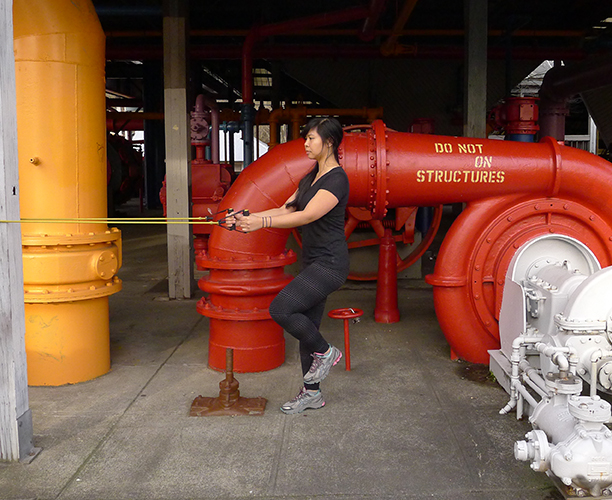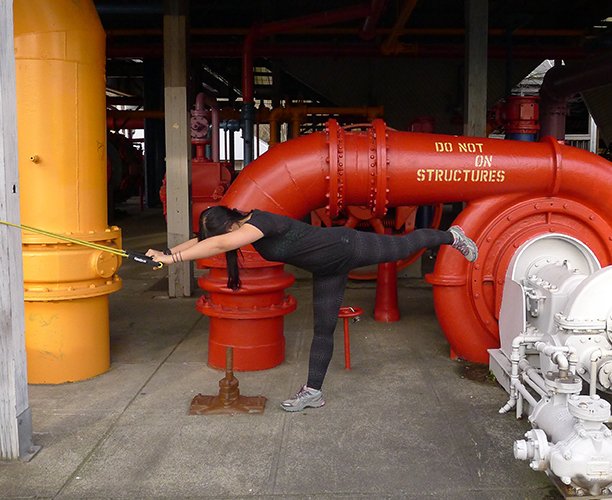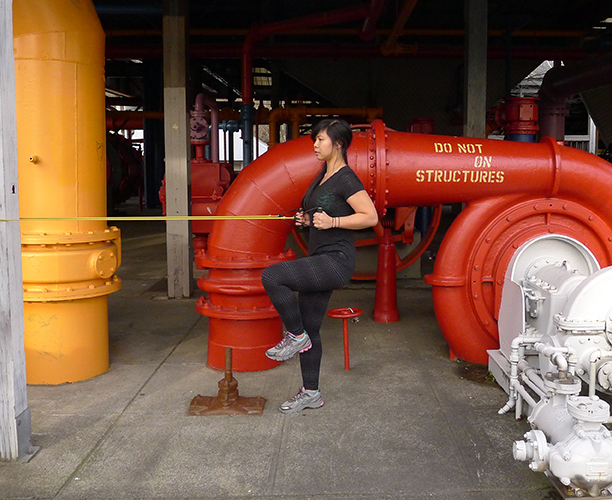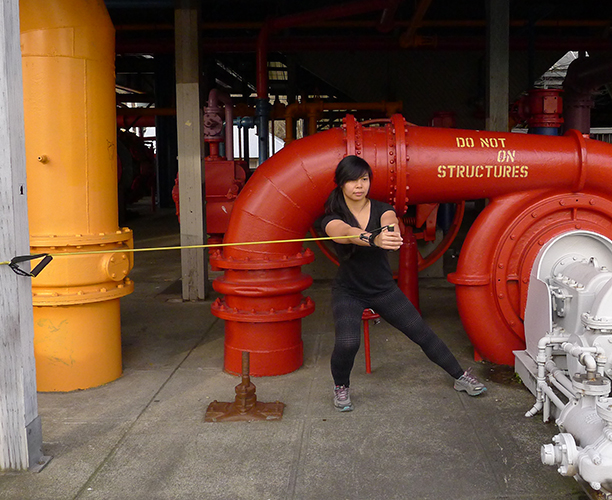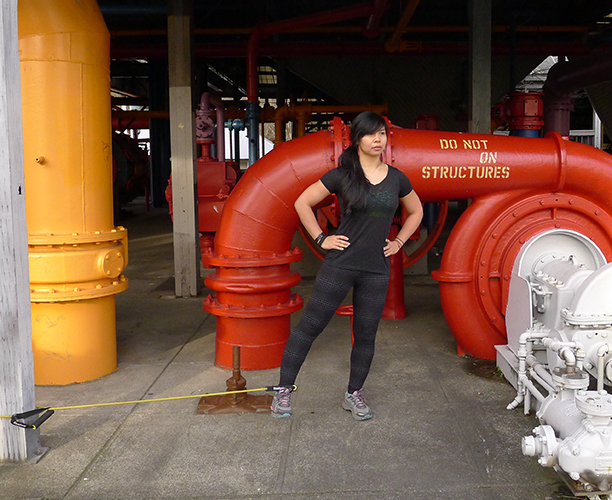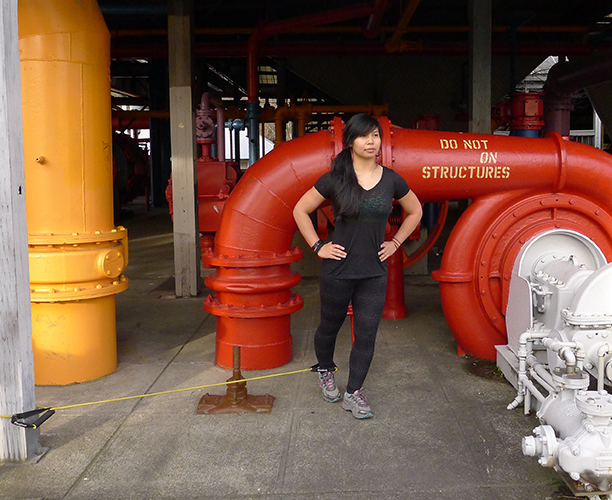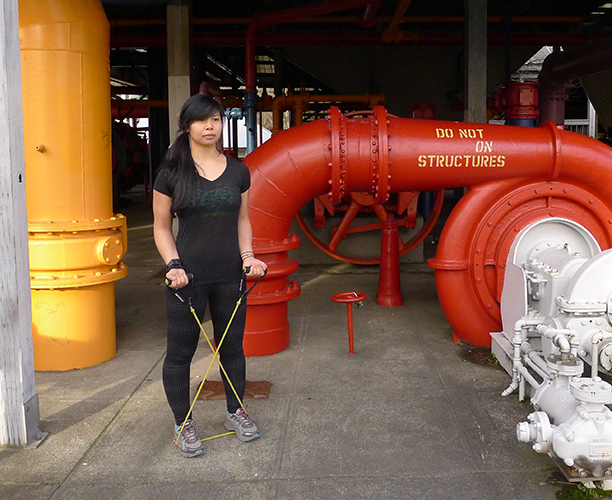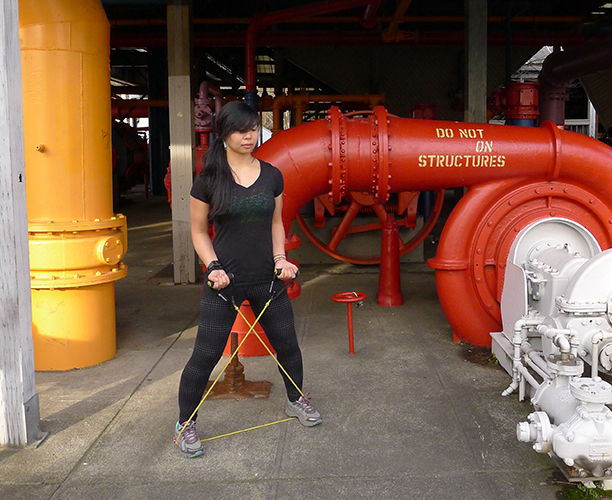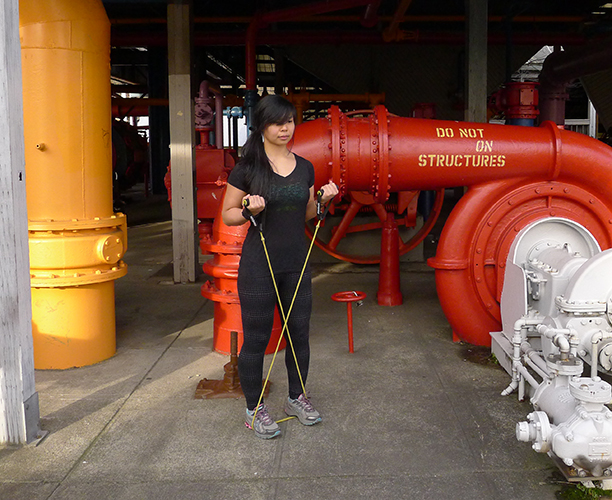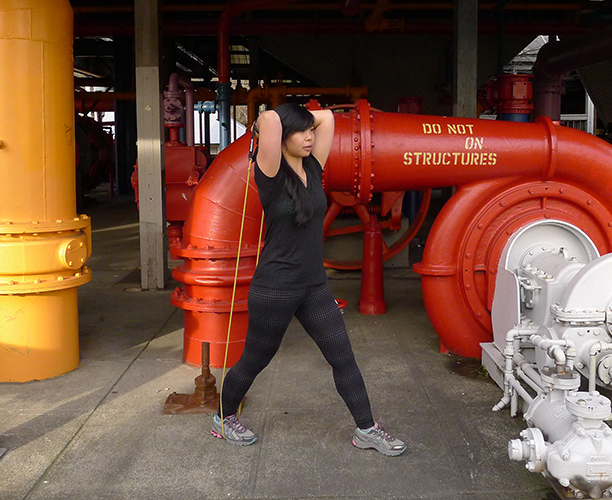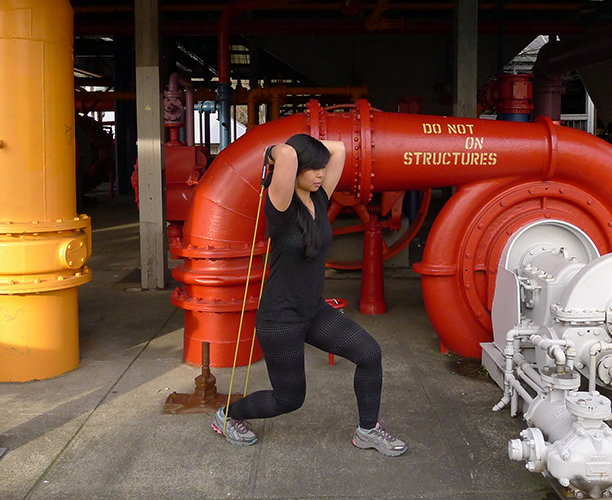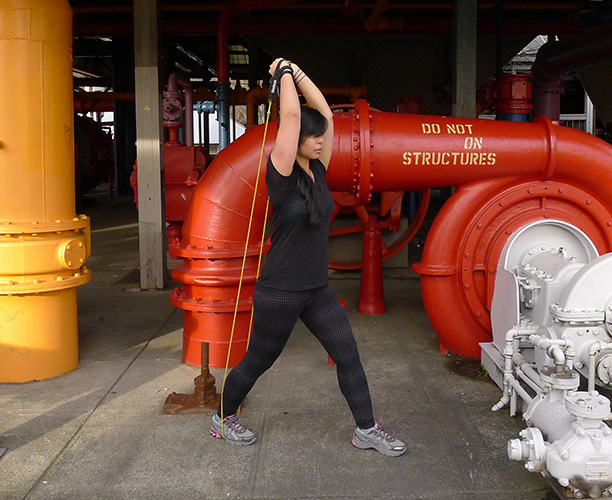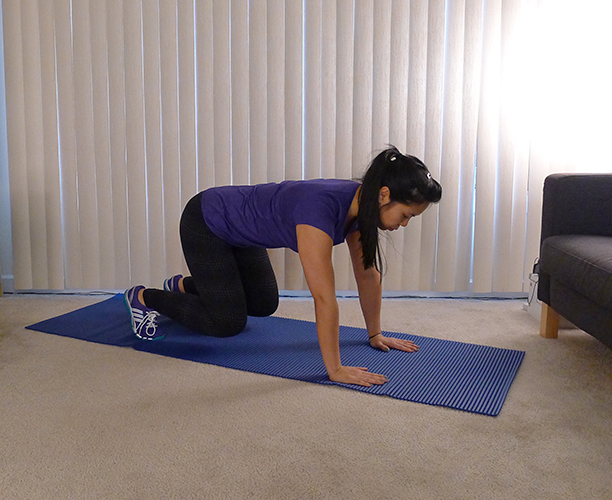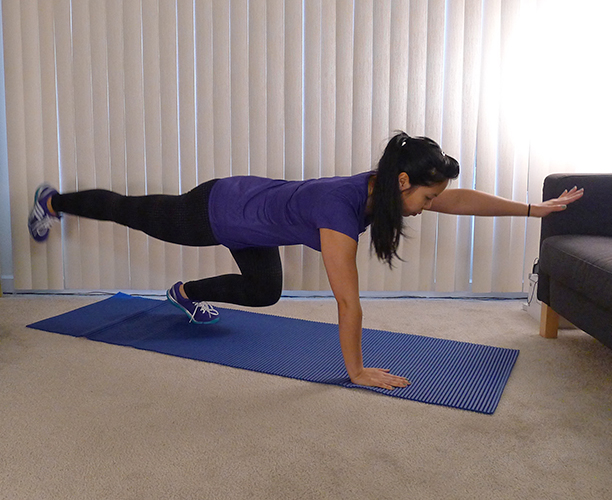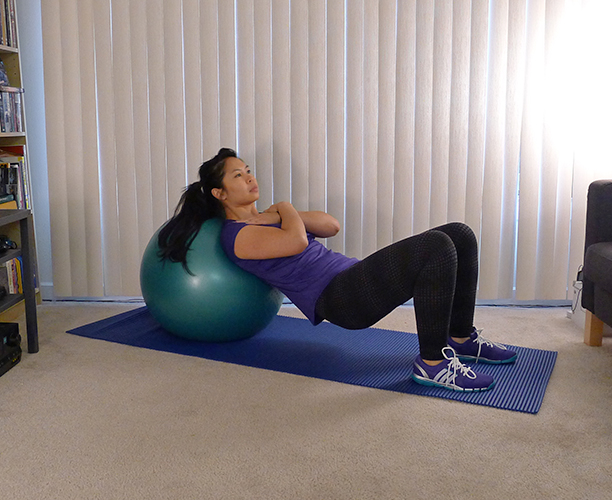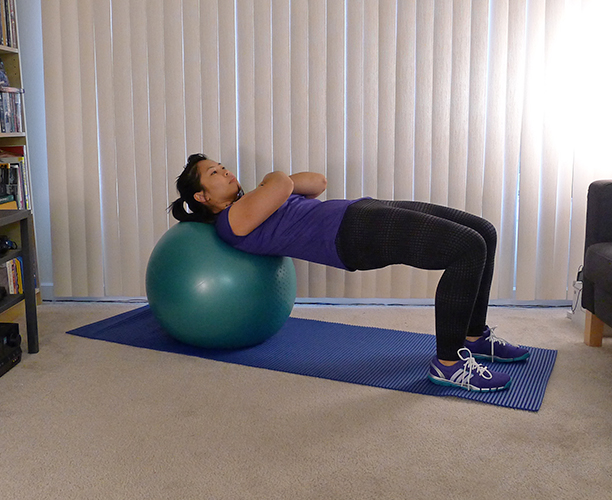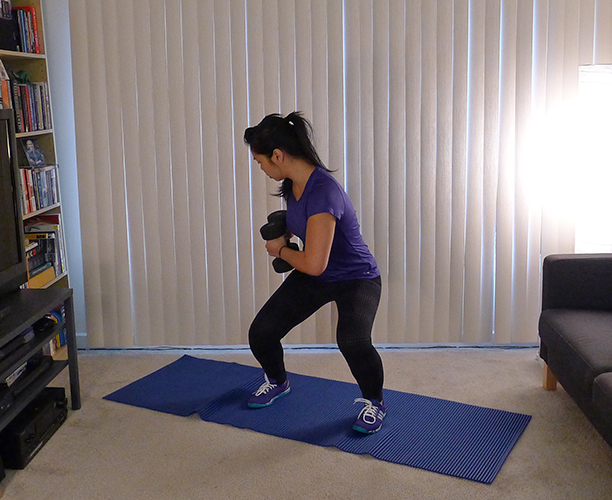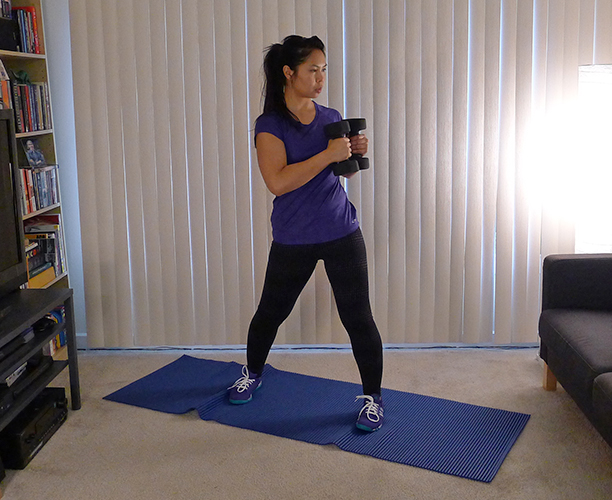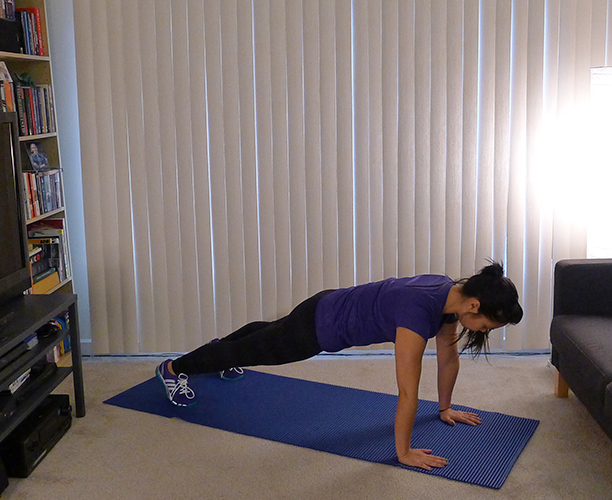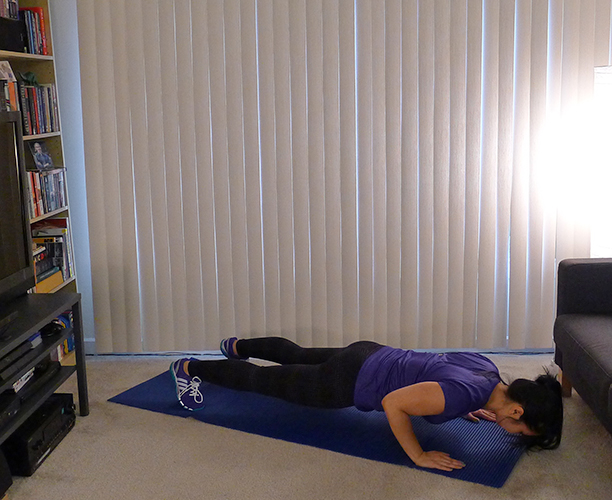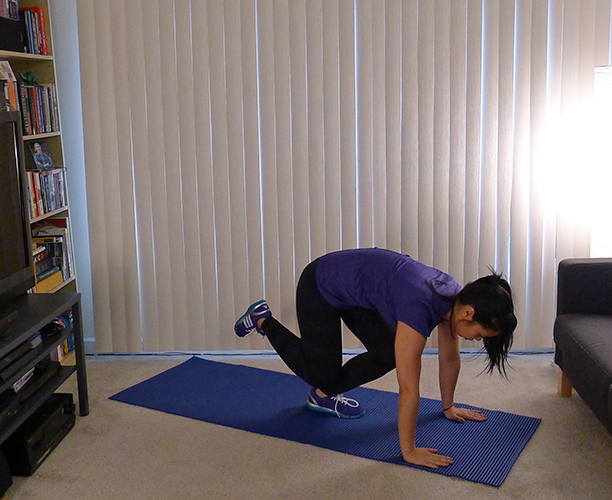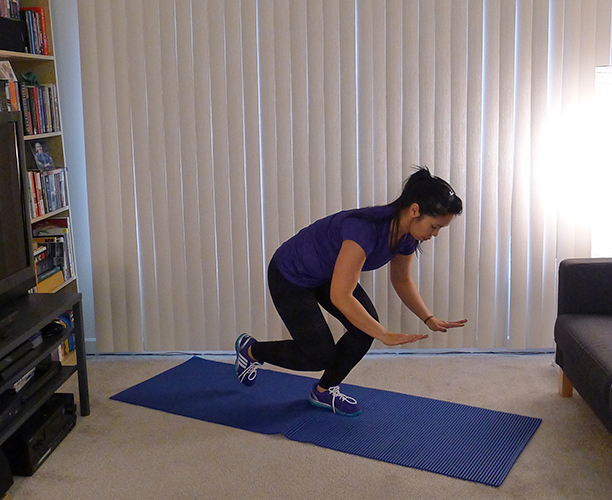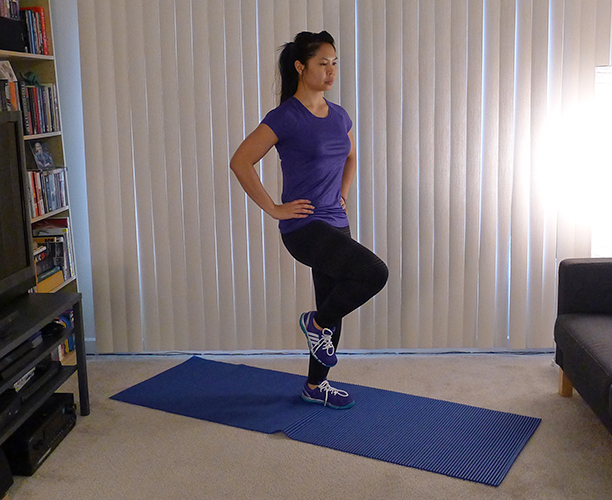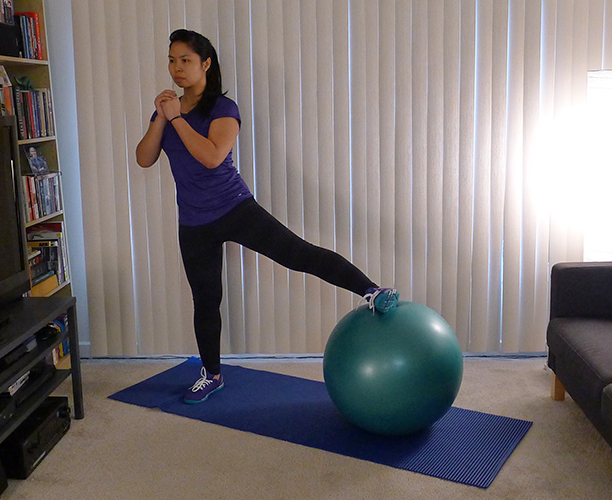There are a ton of exercises to build strength with that involve weights and machines. But when you don’t have access to those things, are on the go or just don’t feel like lifting heavy, there is a great advantage to just using resistance bands. Bands are great for strength training in ways weights don't do justice. For instance, control! With bands, there is a greater focus on both the “push” and the “pull” rather than just getting the weight to wear it needs to go and then dropping it because you can’t hold it anymore. Training both the push/pull of muscles is a fantastic way to prevent injury and build stabilization in surrounding muscle groups.
Today we’ll go over some fun resistance exercises to add to your list. If you are playing around with these and you don’t feel like you are getting any work done, there are two key things to adjust to get them right. First, adjust the distance or slack you are giving the resistance band. Either you are standing too close or too far to the anchored side or you need to find the right weighted band. Having several different bands are ideal, but having one medium band usually does the trick. The second is of course, form. Resistance band exercises work a very specific muscle group, so make sure you are concentrating on the group being worked for each exercise. Lastly, never let the resistance band yank you back to its slack point. Always stay engaged and use the resistance throughout the entire movement,This is where "resistance is futile" matters most—don't let the band render your work useless!
Warrior 3 to Row
This is a great balance exercise that incorporates your upper body at the same time. First, with the resistance band hooked around something sturdy, grab both handles. Step back so that you have enough resistance from the bands with your arms extended. Start by balancing on one foot with the other knee lifted. Now slowly lower by bending at your hips into a Warrior 3 pose. Pause, activating your core and stabilizing through your lower leg, then come back to an upright position as you pull back the band into a row. 10–15 reps on each side.
Good for:
single leg stability, dodging bullets in The Matrix, tight-rope walking
Oblique Lateral Drive
Remember how we stopped doing crunches? Good. Now that we’ve stopped worrying about crunches we can move onto some real core work. Tie one handle to a sturdy object at waist level. Step laterally until you have a good amount of resistance from the band. With the other handle gripped with both hands in front of your chest, arms straight, lower down into a lateral lunge position. Keeping the handle and arms directly in front of your chest throughout the entire movement, drive laterally with your hips to end the movement with your weight shifted to your other leg. It might feel strange at first, but when you drive laterally without popping up, squeeze your obliques at the end of the movement. Think of it as you are about to hit a wall and you are bracing for impact on the outer side of your body. It will burn.
Good for:
core strength, becoming a brick wall
Hip Abduction/Adductions
This one is an all-around great exercise for tight hips and groin. I love this one because it is a great way to train my legs to find power in my pull while speed skating. Tie one handle of your band to a sturdy object at ankle level. Take the other handle and slip your foot into it so it rests just above your ankle. Walk until you get a good resistance with your leg extended from your body. To start, pull the leg with the band until it is directly in front of your other leg. Extend away from your body, then complete the movement by pulling directly behind your standing leg. Keep your hips pointing forward at all times, keeping your foot flexed and pointing forward as well. That counts as 1 rep. 10 reps each side.
Good for:
hip and groin flexibility, tap dancing like Gene Kelly
X-Band Walk to Bicep Curl
You will hear me talk about glutes a lot. Glutes are your saviour and if activated properly in the movements you do, it will be like unleashing the power of the kraken. If you find yourself with tightness in your TFL, this is a great exercise to strengthen those glute muscles to take the tension off. Place both feet over the resistance band and cross the band in front of your body like an X. Start with feet hip width apart. Pull the band upward to give yourself the right amount of tension. Now step laterally with one foot and bring your other foot to meet back under you in the start position, adding a bicep curl at the end of the movement. Really concentrate on what your backside is doing here. Use your glute muscles to complete the movement rather than just stepping side to side. 10 paces each direction.
Good for:
Glute strengthening, TFL release
Split Squat to Tricep Extension
Start in a split squat position, hips square. With the resistance band under your back foot, grab the handles behind your head with your elbows close to your ears. Lower down into a squat as low as you can, keeping the front knee in line with your ankle. As you stand back up, extend your arms above your head, still keeping your arms close to your head. 12 reps each leg.
Good for:
Quad and tricep strengthening


